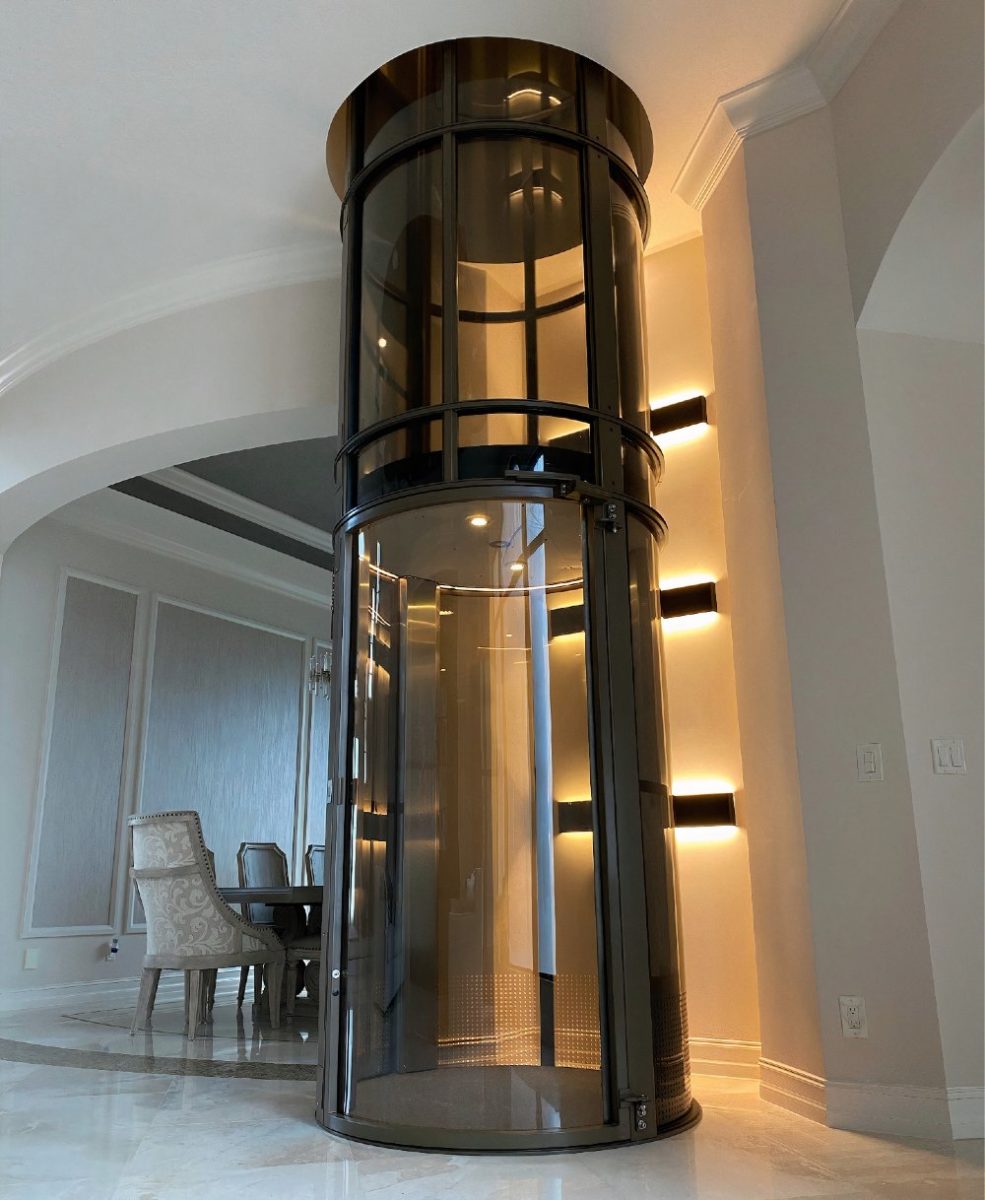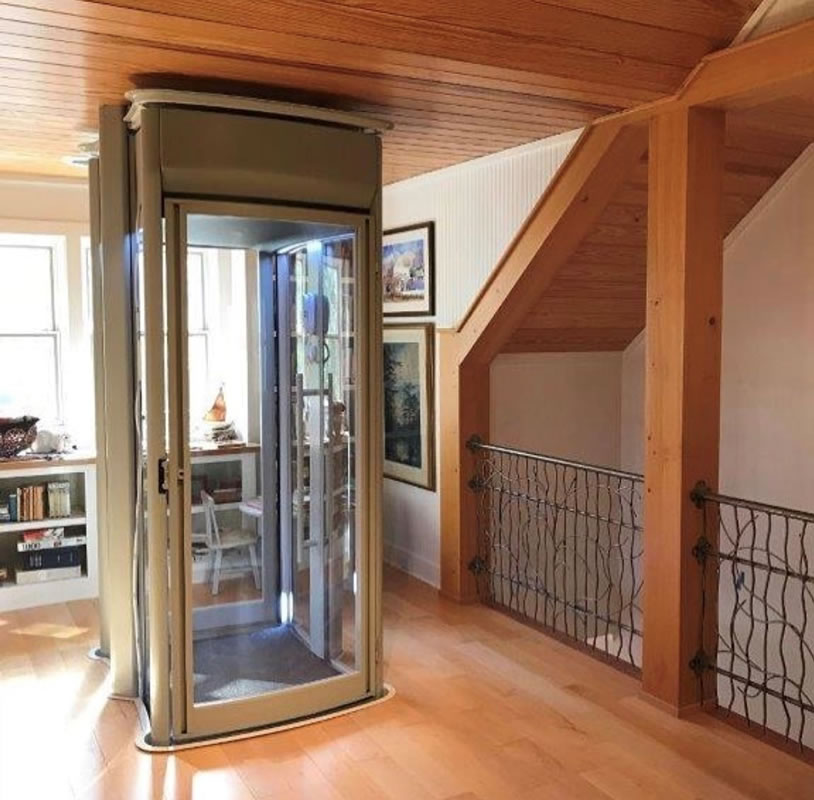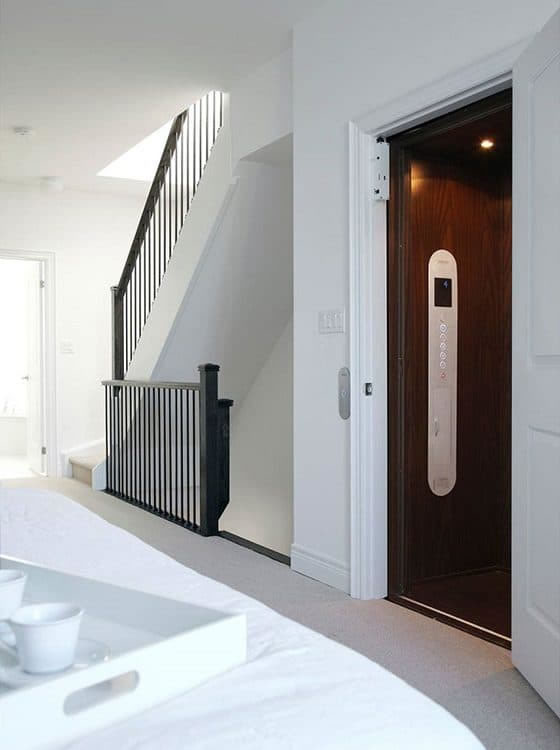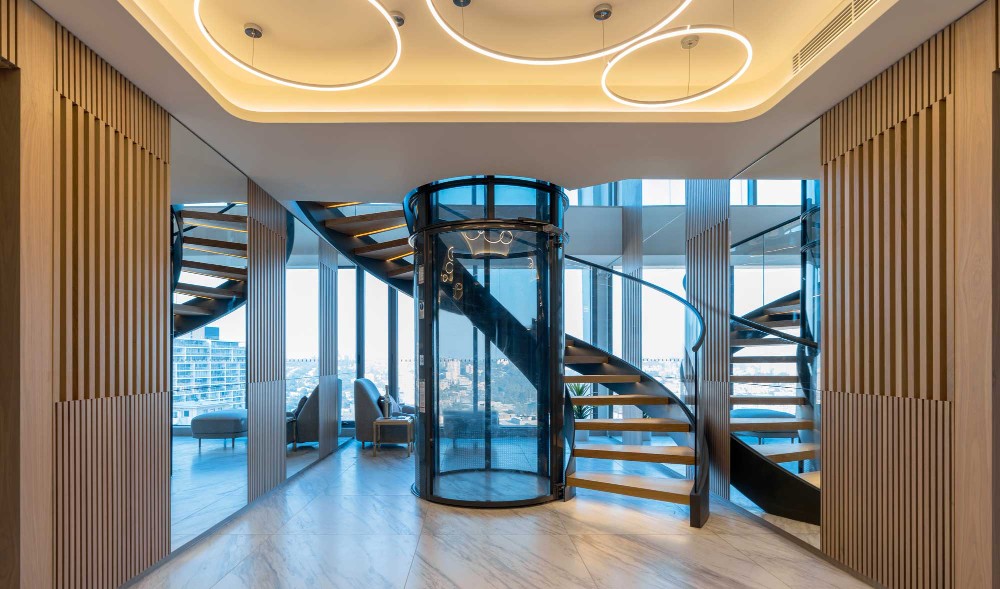Energy efficiency in home elevators is more achievable today than ever before. With advances in technology, homeowners can now install elevators that do not significantly increase energy consumption. Choosing energy-efficient home elevators, like those offered by HomeLift, can lead to considerable savings on electricity bills. This not only benefits the wallet but also contributes to reducing the overall carbon footprint of a household.
Modern elevators utilize smart designs and technologies. For instance, Stiltz Lift, Cibes-Symmetry, Inclinator, Cambridge Elevators, and PVE Pneumatic Vacuum Elevators, all offered by HomeLift, are designed with space efficiency and energy conservation in mind. Stiltz Lift elevators operate using a self-contained motor that plugs into a standard home power outlet, consuming minimal energy. Additionally, PVE Pneumatic Vacuum Elevators use air pressure to move the cab, requiring no lubricants or counterweights, making them an eco-friendly choice.
Another energy-saving feature found in HomeLift’s elevator models is machine-room-less (MRL) traction technology, as seen in the Cibes-Symmetry Home Elevator. These systems save space and energy by fitting efficient motors within the hoistway. Additionally, regenerative braking systems, present in many of HomeLift’s models (source), allow excess energy to be fed back into the building’s grid, making them not only environmentally friendly but also cost-effective.
Fundamentals of Energy Efficiency in Home Elevators

Energy efficiency in home elevators plays a crucial role in making residential spaces more sustainable. One of the key elements is the use of regenerative motors, which capture energy generated during elevator descent and feedback into the building’s power system, reducing overall electricity consumption.
Standby modes are another important feature. When elevators are not in use, systems like the Stiltz Lift and Cambridge Elevators models can shut down non-essential functions, saving power without compromising readiness.
LED lighting in elevator cabins, such as those in the Inclinator and Cibes-Symmetry models, is more energy-efficient than traditional lighting, providing sufficient illumination while using significantly less energy and generating less heat.
Regular maintenance is essential to ensure systems function efficiently and prevent energy waste. HomeLift offers comprehensive maintenance plans for its models, helping homeowners optimize energy use.
Design Considerations for Energy-Efficient Home Elevators
When selecting a home elevator, the type of drive system and use of machine-room-less (MRL) technology play a crucial role. HomeLift carries multiple MRL models, including the Cibes-Symmetry Home Elevator, which uses efficient traction drive systems for maximum energy conservation.

Machine Room-Less (MRL) Technology
MRL elevators are designed without a separate machine room, which saves space and energy. By placing the motor in the hoistway, these elevators reduce both installation and maintenance costs. MRL elevators also provide a smooth ride and improved aesthetics, seamlessly integrating with modern home designs.
The energy efficiency of MRL elevators comes from their advanced control systems. These systems optimize power consumption, making MRL elevators a cost-effective choice for residential settings. Homeowners can benefit from reduced energy bills while enjoying reliable performance and space-saving benefits.
Drive Systems: Hydraulic vs. Traction
Choosing the right drive system is crucial for energy efficiency.
- **Hydraulic systems, commonly used in older models, operate smoothly but require more energy due to the power needed to pump hydraulic fluid.
- Traction drive systems, like those in the Cibes-Symmetry Home Elevator, use ropes and pulleys, typically offering higher efficiency. These systems require less energy due to better load distribution and regenerative capabilities.
By selecting a traction-based system, homeowners can achieve both energy savings and superior ride quality in their elevators.
Counterweight Optimization
Counterweight optimization enhances elevator performance by balancing the system. Proper counterweighting reduces the energy needed to move the elevator, as it offsets the cab’s weight. The Cibes-Symmetry Home Elevator models available through HomeLift include well-optimized counterweight systems, leading to improved efficiency and a longer lifespan for the elevator components.
Materials and Components Selection
Selecting the right materials and components for home elevators is crucial for maximizing energy efficiency. HomeLift offers models that prioritize eco-friendly materials, high-efficiency motors, regenerative drives, and LED lighting systems to enhance performance and sustainability.

- Eco-Friendly Materials: Many of HomeLift’s elevators feature interiors made from sustainable woods and non-toxic finishes.
- High-Efficiency Motors: The gearless motors found in the Cibes-Symmetry, Cambridge, and Inclinator models operate more smoothly and quietly compared to traditional geared models, improving energy efficiency by around 30%.
- Regenerative Drives: Some HomeLift models, such as the Cibes-Symmetry Home Elevator, incorporate regenerative drive technology, converting excess energy into usable power and achieving up to 50% energy savings.
- LED Lighting: All HomeLift models feature LED cabin lighting to minimize electricity consumption and reduce heat output.
Cost-Benefit Analysis of Energy-Efficient Elevators
Investing in energy-efficient elevators can seem expensive initially, but the long-term savings outweigh the upfront costs. Stiltz Lift Home Elevators, for example, use minimal energy, comparable to a standard household appliance, while Cibes-Symmetry’s traction-driven models offer substantial reductions in long-term energy expenses.
| Feature | Benefit |
|---|---|
| Regenerative Drives | Converts and reduces energy costs |
| LED Lighting | Lowers power consumption |
| Smart Controls | Optimizes operation, saving energy |
Additionally, modern elevators with less mechanical complexity require less frequent maintenance, leading to financial savings over time. Choosing HomeLift’s energy-efficient elevator models ensures reduced energy consumption, making them a smart choice for sustainable home designs.
Conclusion
HomeLift offers a range of energy-efficient home elevators, from the compact and low-energy-consuming Stiltz Lift models to the space-saving and high-performance Cibes-Symmetry Home Elevator. Each model is designed with sustainability and efficiency in mind, ensuring homeowners benefit from reduced energy costs while enhancing mobility and convenience.
By integrating advanced technologies like MRL traction systems, regenerative braking, and LED lighting, HomeLift helps homeowners invest in sustainable, cost-effective elevator solutions. Whether you’re looking for a compact home lift or a customized high-efficiency elevator, HomeLift has an option to fit your needs while supporting long-term energy savings.
For more information on the best energy-efficient elevator for your home, contact HomeLift today!

